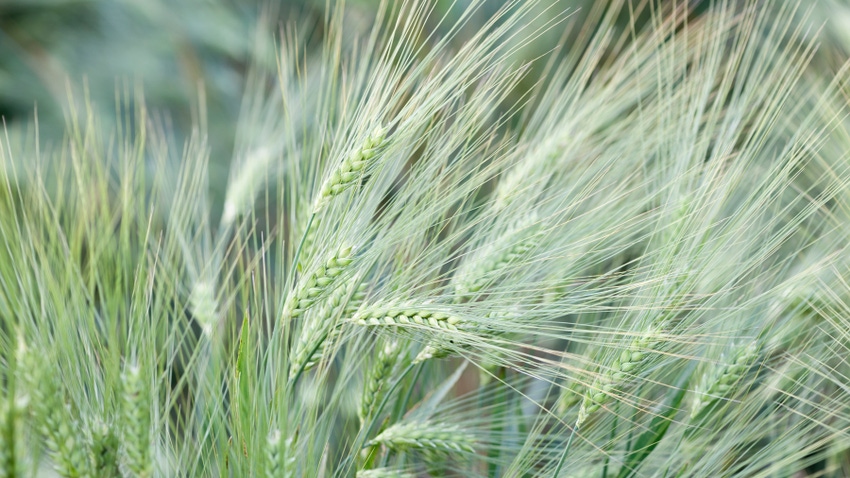May 23, 2023

by Daniela Carrijo
With the cold snap we had in mid- to late April, there have been concerns with freeze injury in small grains. This may be counterintuitive, but the mild winter we had this year may have contributed to this.
With winter temperatures above normal for a prolonged period, more growing degree days were accumulated, and crop growth was accelerated. Plants transitioned from the vegetative to reproductive stage earlier in spring when temperatures (despite being warmer than usual) were still too cold for the developing head to be exposed to.
Overall, the closer the plant is to heading, the more susceptible it is to freeze injury. For example, in a wheat study, a 5% yield reduction was observed because of freeze injury occurring at the Feekes 6 stage (first node), compared with a 50% yield reduction when plants were at the Feekes 10.5.1 stage (beginning of flowering).
Among our small grains, barley was likely the most affected by our early spring recent cold snap given that it is the least cold-tolerant and was likely further along in development, compared with wheat and rye. In Centre County, we observed freeze injury symptoms in our barley variety trial after temperatures dropped below 30 degrees F. The cold snap coincided with the beginning of flag leaf expansion and caused the twisting of flag leaves.
Before heading, there is little anyone can do to estimate the extent of freeze damage, except to extract the developing head from inside the boot and look for discoloration (browning) or deformation. If no severe symptoms appear at this stage, a more assertive examination can be done after heading.
If your barley is heading, scout your fields for freeze injury and estimate the impact on yield. Damaged heads may appear crooked because of being stuck inside a twisted flag leaf. That said, crooked heads can still bear healthy spikelets.
Look closely at each spikelet and monitor fertilization and grain fill. Note that fertilization begins in the middle portion of the head and continues upward toward the top of the head and then downward toward the base of the head.
Unfertilized spikelets will appear translucid or bleached, while healthy spikelets will appear green and will contain a clear liquid soon after anthesis (pollination).
Thinking ahead for next season, if freeze injury is a concern for you, then it is important to select a variety with good cold tolerance. Here is some preliminary data on barley winter survival from this year’s Penn State variety trial:

Varieties were scored both visually (higher numbers indicate less cold injury symptoms) and using a canopy reflectance index (NDVI) given by a light sensor (GreenSeeker, Trimble).
NDVI is not a direct measurement of cold injury, but it is a measurement of plant greenness — with higher values typically indicating higher biomass, nitrogen content and overall plant health.
The table shows that NDVI and score values are generally correlated, with Lightning and Hirondella being some of the most cold-tolerant varieties in our Centre County trial.
It is also worth checking the Cornell Small Grains Variety Trials, which have winter survival data from the 2021-22 season.
Carrijo is a grain production specialist with Penn State Cooperative Extension.
Source: Penn State Cooperative Extension
You May Also Like




